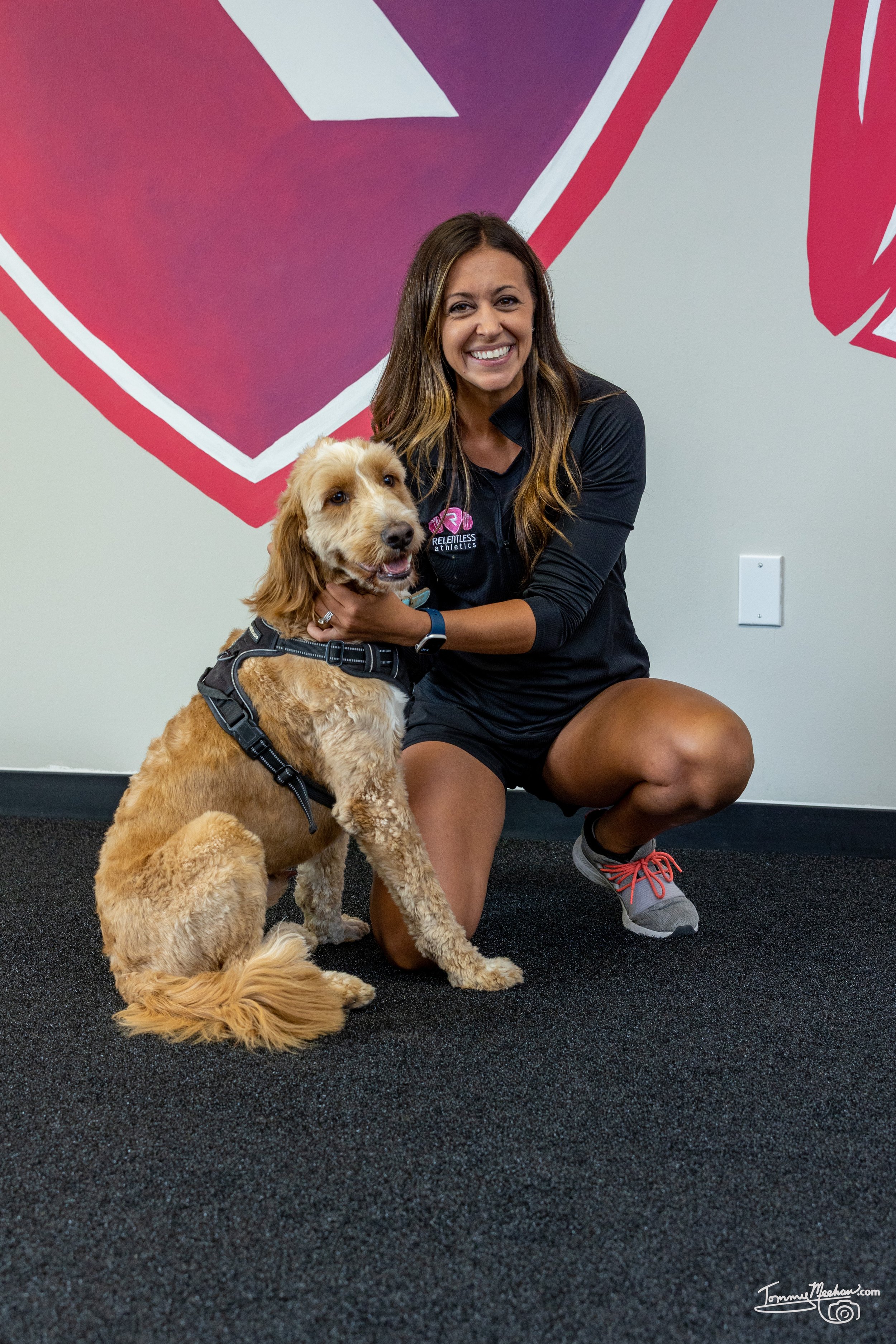Three Crucial Strategies for Female Athletes to Prevent Shin Splints
By Emily Neff (Pappas), Ph.D. student
Shin splints are a common ailment among field sport athletes and can be particularly challenging for female athletes. However, with strategic measures in place, your daughter can significantly reduce their risk of developing this painful condition.
Here are three essential strategies
1. Strength Training: Building a Solid Foundation
One key aspect of preventing shin splints is developing strong lower leg muscles.
Incorporating targeted strength training exercises into your athlete’s off-field training can help build a solid foundation, enhancing the stability and support of the muscles around the shin.
Focusing on a progressive program fit for your daughter’s needs is the fastest way to reduce her likelihood of shin splints.
Here are a few of our favorite movements to program into our female athletes’ programs in addition to sprint training!
2. Gradual Increase in Running Volume: Patience Pays Off
It's no secret that going from zero to one hundred too fast leads to injuries, and shin splints are no exception.
Female athletes should adopt a gradual approach when increasing their running volume.
Rapidly escalating the intensity or duration of your runs can place excessive stress on your shin muscles and bones, making them more susceptible to injury.
If your athlete has her sports season coming up and needs to run 2mi in her pre-season test, consider this progressive approach to training for the next 8 weeks
Week 1:
Day 1: 2x 0.5mi run (equal rest to work)
Day 2: 4x400m sprint (equal rest to work)
Day 3: 10x100m sprint (equal rest to work)
Week 2:
Day 1: 3x 0.5mi run (equal rest to work)
Day 2: 5x400m sprint (equal rest to work)
Day 3: 12x100m sprint (equal rest to work)
Week 3:
Day 1: 1x 1mi run + 2x 0.5mi run (equal rest to work)
Day 2: 6x400m sprint (equal rest to work)
Day 3: 14x100m sprint (equal rest to work)
Week 4 (deload):
Day 1: 2x 0.5mi run (equal rest to work)
Day 2: 4x400m sprint (equal rest to work)
Day 3: 8x100m sprint (equal rest to work)
Week 5:
Day 1: 2x 1mi run + 1x 0.5mi run (equal rest to work)
Day 2: 8x400m sprint (equal rest to work)
Day 3: 16x100m sprint (equal rest to work)
Week 6
Day 1: 1x 1.5mi run + 1x 1mi run + 2x0.5mi run (equal rest to work)
Day 2: 8x400m sprint (equal rest to work)
Day 3: 16x100m sprint (equal rest to work)
Week 7
Day 1: 1x 2 mi run + 3 x0.5mi run (equal rest to work)
Day 2: 10x400m sprint (equal rest to work)
Day 3: 18x100m sprint (equal rest to work)
Week 8: [PRE-SEASON BEGINS]
Day 1: 2mi run
Day 2: 5x400m sprint (equal rest to work)
Day 3: 10x100m sprint (equal rest to work)
3. Training on Multiple Surface Types: Mix It Up
Running on the same surface repeatedly can contribute to developing shin splints.
To minimize the risk, diversify your training surfaces.
Alternating between grass, dirt trails, and softer running tracks can help distribute the impact forces more evenly across your lower legs.
Softer surfaces absorb some of the shock, reducing the strain on your shin muscles.
By incorporating variety into your training routine, you not only challenge your body in different ways but also provide it with opportunities to adapt and strengthen, lowering the likelihood of shin splints.
Closing Notes:
In conclusion, a proactive approach to shin splint prevention involves combining strength training, gradual progression, and varied training surfaces. By integrating these strategies into your daughter’s training routine, she can significantly reduce her chances of experiencing the discomfort associated with shin splints, allowing for a more enjoyable and sustainable athletic journey.
Want to learn more? Check out these related articles and videos
ABOUT THE AUTHOR
In 2015 Emily opened Relentless Athletics to build a community for female athletes while educating their parents and coaches on the necessity of strength training and sports nutrition to optimize sports performance and reduce injury risks in the female athlete population.
Emily holds a M.S. in Exercise Physiology from Temple University and a B.S. in Biological Sciences from Drexel University. She is currently pursuing her Ph.D. at Concordia University St. Paul with a research focus on female athletes & the relationship between strength training frequency, ACL injury rates, and menstrual cycle irregularities (RED-s). Through this education, Emily values her ability to coach athletes and develop strength coaches with a perspective that is grounded in biochemistry and human physiology.
When she isn’t on the coaching floor or working in her office, she is at home with her husband Jarrod and their daughter Maya Rose, and, of course, their dog Milo (who has become the mascot of Relentless)!!











